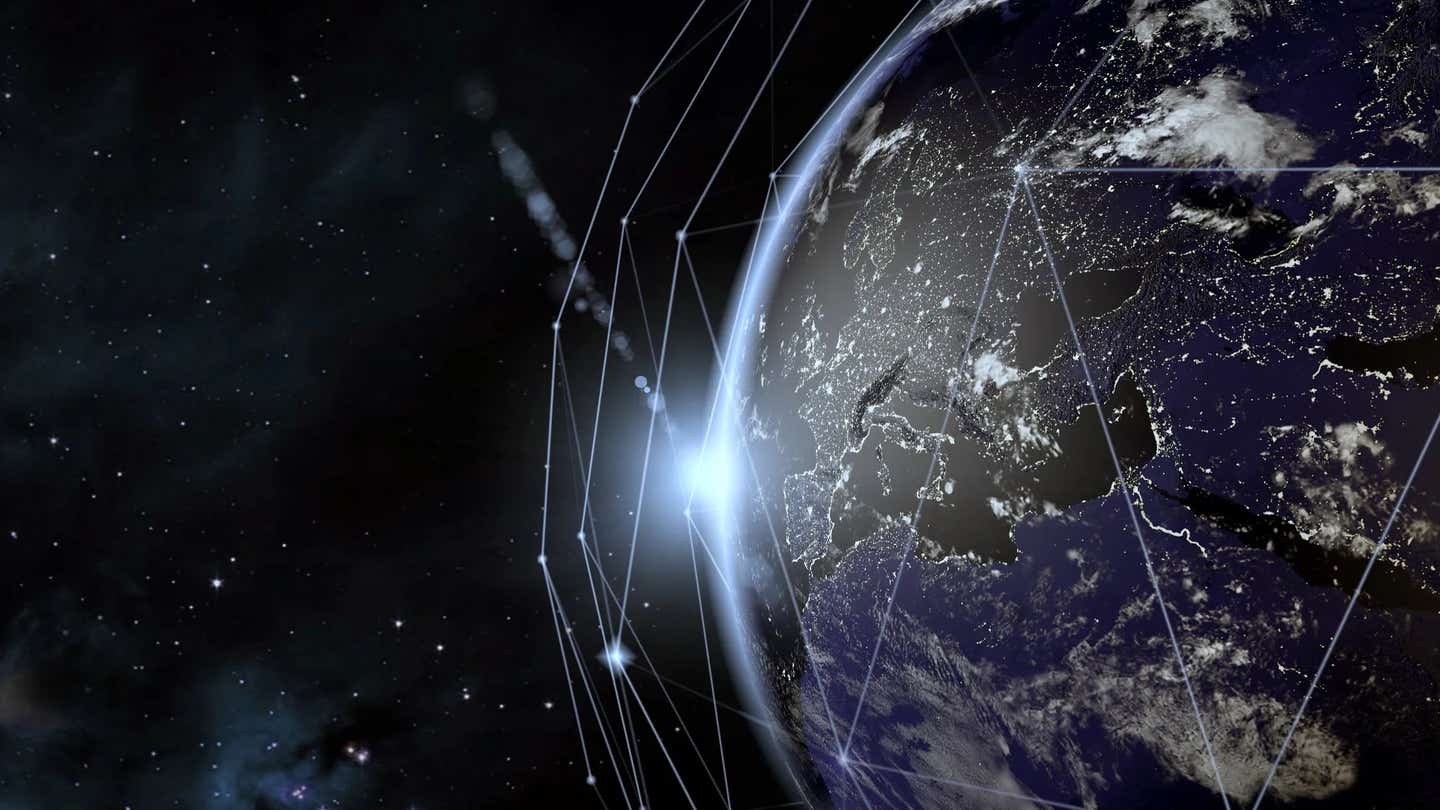Effects of climate change are shifting the Earth’s axis, study finds
The pumping of groundwater from the Earth’s depths and its redistribution has caused the planet to tilt nearly 80 centimeters to the east.

[Nov. 27, 2023: JJ Shavit, The Brighter Side of News]
In this representation of the underground imaging, seismic waves from earthquakes in the southern hemisphere sample the ULVZ structure along the Earth’s core-mantle boundary and are recorded by sensors in Antarctica. (CREDIT: Getty Images)
In a fascinating revelation, a recent study published in Geophysical Research Letters, the short-format, high-impact research journal of the American Geophysical Union (AGU), has highlighted the profound influence of human activities on the Earth's rotation.
According to this groundbreaking research, the pumping of groundwater from the Earth's depths and its redistribution has caused the planet to tilt nearly 80 centimeters (31.5 inches) to the east between 1993 and 2010 alone. This revelation underscores the intricate relationship between human actions and the Earth's fundamental dynamics, with implications spanning the realms of Earth and space sciences.
Prior to this study, scientists had estimated that humans had pumped a staggering 2,150 gigatons of groundwater from 1993 to 2010, equivalent to more than 6 millimeters (0.24 inches) of sea-level rise. However, validating this estimate proved to be a challenging task. To address this issue, the researchers turned to the Earth's rotational pole, a point around which our planet rotates, which is known to move during a phenomenon called polar motion.
During polar motion, the Earth's rotational pole varies relative to its crust, a phenomenon influenced by the distribution of water across the planet. Similar to how adding a tiny weight affects the spin of a top, the Earth's rotation experiences subtle changes as water is redistributed.
Related Stories
Ki-Weon Seo, a geophysicist at Seoul National University who spearheaded this study, emphasized the significance of these findings, stating, "Earth's rotational pole actually changes a lot. Our study shows that among climate-related causes, the redistribution of groundwater actually has the largest impact on the drift of the rotational pole."
The revelation that water plays a pivotal role in altering the Earth's rotation came to light in 2016. However, until now, the specific contribution of groundwater to these rotational changes remained unexplored.
In this study, researchers employed sophisticated modeling techniques to assess the observed changes in the drift of Earth's rotational pole in conjunction with the movement of water. They initially considered only ice sheets and glaciers and later introduced different scenarios of groundwater redistribution.
(a) Individual contributors to the PM excitation trend. (b) Sum of PM excitation trend contributors with (solid blue) and without (dashed blue) groundwater depletion. Red arrow is the observed PM excitation. (CREDIT: Geophysical Research Letters)
The model yielded a precise match with the observed polar drift only when the researchers incorporated the effects of 2150 gigatons of groundwater redistribution. Without this crucial factor, the model deviated by a significant 78.5 centimeters (31 inches) or 4.3 centimeters (1.7 inches) of drift per year.
Seo expressed his satisfaction at identifying the previously unexplained cause of the rotational pole drift but also voiced concern about the implications, saying, "On the other hand, as a resident of Earth and a father, I'm concerned and surprised to see that pumping groundwater is another source of sea-level rise."
Global mean sea level (GMSL) contributions from the Antarctic ice sheet (AIS) (a), Greenland ice sheet (GrIS) (b), mountain glaciers (c), soil moisture (d), artificial reservoirs behind dams (e) and groundwater (f). Note differences in the vertical scales. (CREDIT: Geophysical Research Letters)
Surendra Adhikari, a research scientist at the Jet Propulsion Laboratory who was not involved in the study, lauded the research, stating, "This is a nice contribution and an important documentation for sure. They've quantified the role of groundwater pumping on polar motion, and it's pretty significant."
The study also highlights the crucial role of groundwater distribution in determining the magnitude of polar drift. Interestingly, redistributing water from midlatitudes has a more pronounced impact on the rotational pole. During the study period, the greatest water redistribution occurred in western North America and northwestern India, both situated at midlatitudes.
Total groundwater storage change on land (a) and the associated sea level variation (b) for 1993–2010. Units are mm of water. (CREDIT: Geophysical Research Letters)
In light of these findings, Seo suggested that countries, particularly those in sensitive regions, should consider efforts to slow groundwater depletion rates. Such conservation approaches have the potential to influence the rate of drift, but only if they are sustained over several decades.
It's important to note that the rotational pole typically experiences shifts of several meters within a year, so the changes due to groundwater pumping do not pose an immediate risk of altering the seasons. However, on geologic time scales, polar drift can have far-reaching implications for climate, as pointed out by Adhikari.
X1(a) and X2(b) variations for 1993–2010. Red lines are observed PM excitation (X1, X2) and blue lines are estimated from all known sources shown in blue lines in Figure 1. Barometric pressure, ocean bottom pressure, atmospheric wind and ocean current contributions are also included. Black lines show estimated PM excitation due to groundwater depletion. (CREDIT: Geophysical Research Letters)
Looking ahead, the researchers are contemplating delving into the past to gain further insights. Seo highlighted the potential of observing changes in Earth's rotational pole to understand variations in continent-scale water storage over the last century. This could help answer questions about hydrological regime changes resulting from climate warming. Indeed, polar motion data dating back to the late 19th century may hold the key to unlocking a deeper understanding of our planet's complex interactions between water, rotation, and climate.
For more green news stories check out our Green Impact section at The Brighter Side of News.
Note: Materials provided above by The Brighter Side of News. Content may be edited for style and length.
Like these kind of feel good stories? Get the Brighter Side of News' newsletter.
Joseph Shavit
Head Science News Writer | Communicating Innovation & Discovery
Based in Los Angeles, Joseph Shavit is an accomplished science journalist, head science news writer and co-founder at The Brighter Side of News, where he translates cutting-edge discoveries into compelling stories for a broad audience. With a strong background spanning science, business, product management, media leadership, and entrepreneurship, Joseph brings a unique perspective to science communication. His expertise allows him to uncover the intersection of technological advancements and market potential, shedding light on how groundbreaking research evolves into transformative products and industries.



